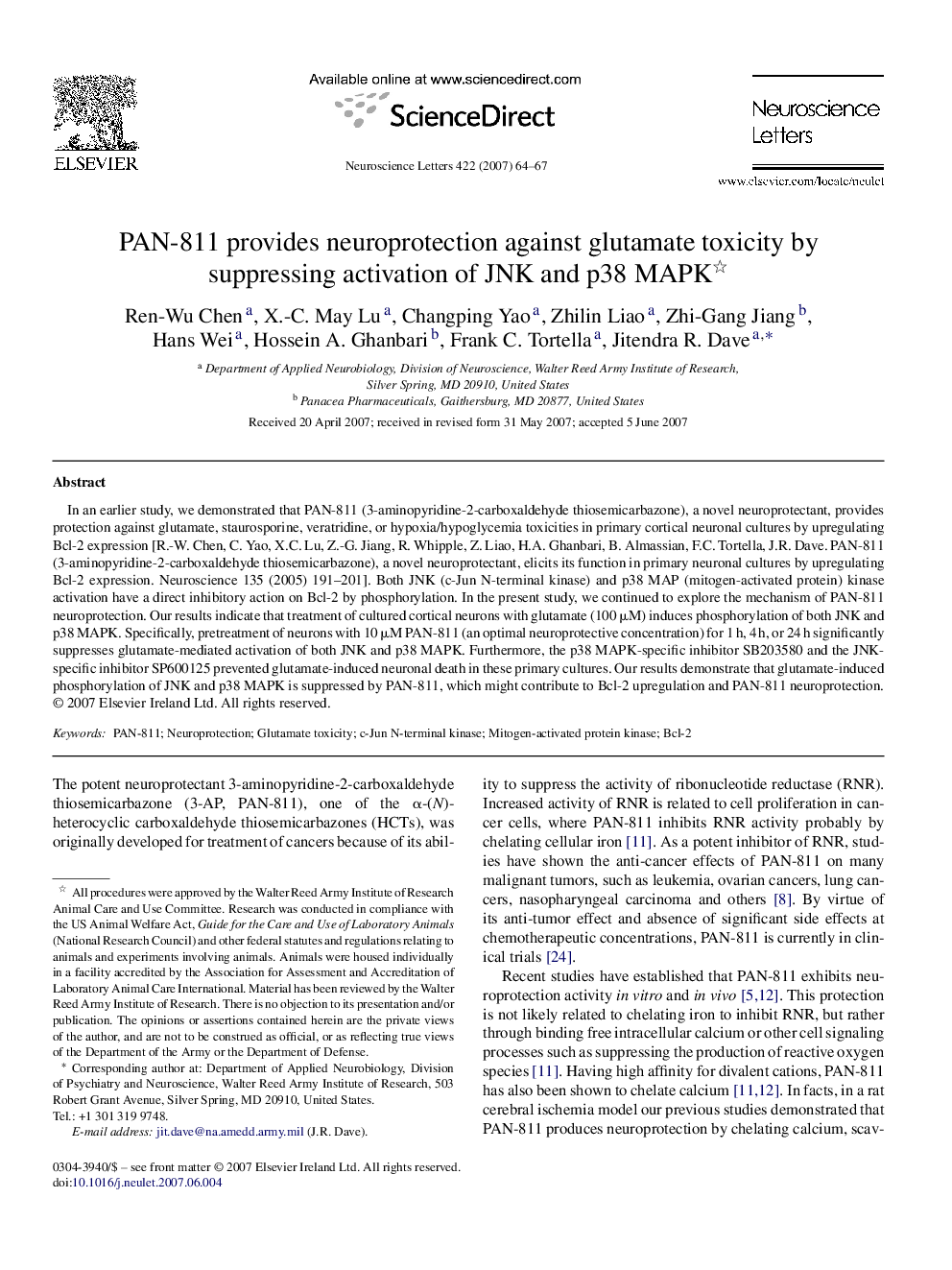| Article ID | Journal | Published Year | Pages | File Type |
|---|---|---|---|---|
| 4349256 | Neuroscience Letters | 2007 | 4 Pages |
In an earlier study, we demonstrated that PAN-811 (3-aminopyridine-2-carboxaldehyde thiosemicarbazone), a novel neuroprotectant, provides protection against glutamate, staurosporine, veratridine, or hypoxia/hypoglycemia toxicities in primary cortical neuronal cultures by upregulating Bcl-2 expression [R.-W. Chen, C. Yao, X.C. Lu, Z.-G. Jiang, R. Whipple, Z. Liao, H.A. Ghanbari, B. Almassian, F.C. Tortella, J.R. Dave. PAN-811 (3-aminopyridine-2-carboxaldehyde thiosemicarbazone), a novel neuroprotectant, elicits its function in primary neuronal cultures by upregulating Bcl-2 expression. Neuroscience 135 (2005) 191–201]. Both JNK (c-Jun N-terminal kinase) and p38 MAP (mitogen-activated protein) kinase activation have a direct inhibitory action on Bcl-2 by phosphorylation. In the present study, we continued to explore the mechanism of PAN-811 neuroprotection. Our results indicate that treatment of cultured cortical neurons with glutamate (100 μM) induces phosphorylation of both JNK and p38 MAPK. Specifically, pretreatment of neurons with 10 μM PAN-811 (an optimal neuroprotective concentration) for 1 h, 4 h, or 24 h significantly suppresses glutamate-mediated activation of both JNK and p38 MAPK. Furthermore, the p38 MAPK-specific inhibitor SB203580 and the JNK-specific inhibitor SP600125 prevented glutamate-induced neuronal death in these primary cultures. Our results demonstrate that glutamate-induced phosphorylation of JNK and p38 MAPK is suppressed by PAN-811, which might contribute to Bcl-2 upregulation and PAN-811 neuroprotection.
